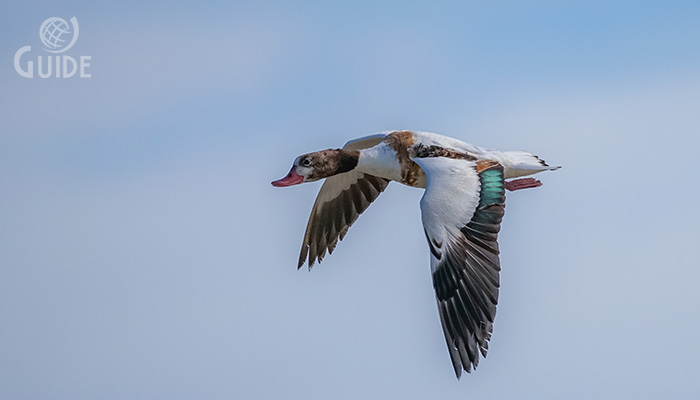
English: Common
Shelduck, Northern Shelduck, Red-billed Shelduck
Russian: Пеганка
German: Brandgans
French: Tadorna
de Belon
Mongolian: Анхидал ангир
Japanese: ツクシガモ (Tsukushi-gamo)
Body
length: 55-65 cm
Wing
span: 100-120 cm
Breeding visitor
Breeding season: May-August
Egg number:
7-13
Egg color: Yellowish or creamy white.
Brood: 1 per year
Global status: Least Concern
Regional status: Least Concern
Habitat: Breeds along seashores, at larger lakes and rivers,
preferring open, unvegetated areas. Feeds on shallow water,
grassy shores and arable fields, latter sometimes far from water. Migratory in
N and E. Birds gather in summer from a large part of Europe in huge flocks on
German North Sea coast, with smaller parties elsewhere. Nests in burrow or
under dense bush or building.
Identification: Medium
sized, goose-like, long-necked duck with boldly patterned plumage. Body plump,
bill strong with markedly concave culmen, and legs rather long. Wings long and
rather pointed, arched in normal flight, wingbeats deep when accelerating. When
migrating, usually forms rather small flocks, flying in line low over surface.
Plumage largely white dark green head, red bill, a broad rust-brown belt across
breast, and black scapulars, flight-feathers, tip of tail stripe on centre of
belly. Legs of adult are dull pink, of juvenile greyish.
- Adult
♂: Bright red bill with prominent knob, especially when breeding. Larger
general size of ♂ apparent when pair seen together.
- Adult
♀: Bill often duller red with small knob. Rust-brown and black marks on
chest/belly narrower and less neat.
- Juvenile:
Forehead, face, chin, throat and foreneck white, crown and hindneck brown-grey.
No rust-brown chest-band or black stripe on belly.
- 1st
summer: Like adult, but distinguished in flight by white trailing edge of wing.
Food: Aquatic and terrestrial green plants in
wet meadow.